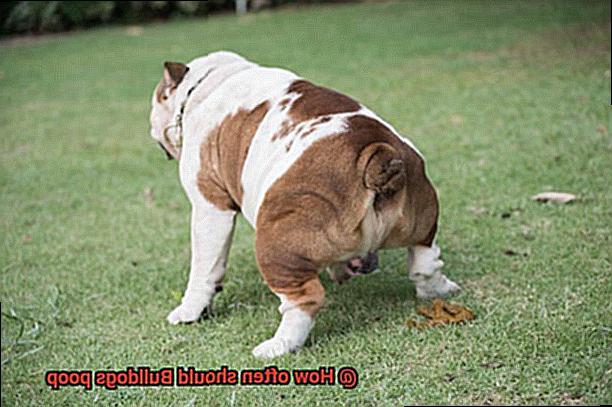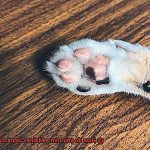Why do Bulldogs have an underbite?
Bulldogs are a breed of dog that can melt the hearts of even the toughest individuals. Their wrinkled faces and friendly personalities make them one of the most lovable breeds in the world. However, their unique underbite sets them apart from other dogs. The lower jaw protrudes in front of their upper jaw, giving them an adorable yet distinct look.
Have you ever wondered why bulldogs have such prominent underbites? Well, it’s not just for show. Bulldogs were originally bred for bull baiting, a brutal sport that was popular in England during the 18th century. The underbite was strategically designed to help them maintain a firm grip on the bull’s face or neck during these violent encounters.
Despite bull baiting being outlawed long ago, bulldogs still maintain their signature underbite. Breeders have selectively bred bulldogs with distinct underbites to preserve this breed’s physical characteristics and charm.
Today, bulldogs no longer have to fight bulls, but they remain one of the most beloved dog breeds worldwide. Their irresistible charm and unique facial structure are here to stay as a nod to their fascinating history. So next time you encounter an adorable bulldog with an underbite, remember – it’s not just for looks; it’s a reminder of this breed’s incredible past.
What is an Underbite?
Contents
This is known as an underbite, a dental condition that can cause various health issues if left untreated. While underbites are more common in certain breeds like Bulldogs, they can affect any dog regardless of breed.
An underbite occurs when the lower jaw protrudes further than the upper jaw, causing misalignment of the teeth. Dogs with an underbite may have difficulty chewing their food properly, which can lead to digestive problems. Additionally, they may experience discomfort and pain while eating or drinking. In severe cases, the lower teeth can rub against the upper gums, leading to gum irritation, infections, and tooth decay.
Although an underbite may be a cosmetic issue in humans, it is a serious health concern for dogs. Therefore, it’s crucial to seek veterinary care if you suspect your dog has an underbite. A veterinarian can diagnose the condition and suggest appropriate treatment options.
Treatment for an underbite may involve regular dental cleaning and maintenance or surgical intervention to correct the alignment of the jaws and teeth. It’s crucial to address this issue early on to prevent any long-term health complications for your furry friend.
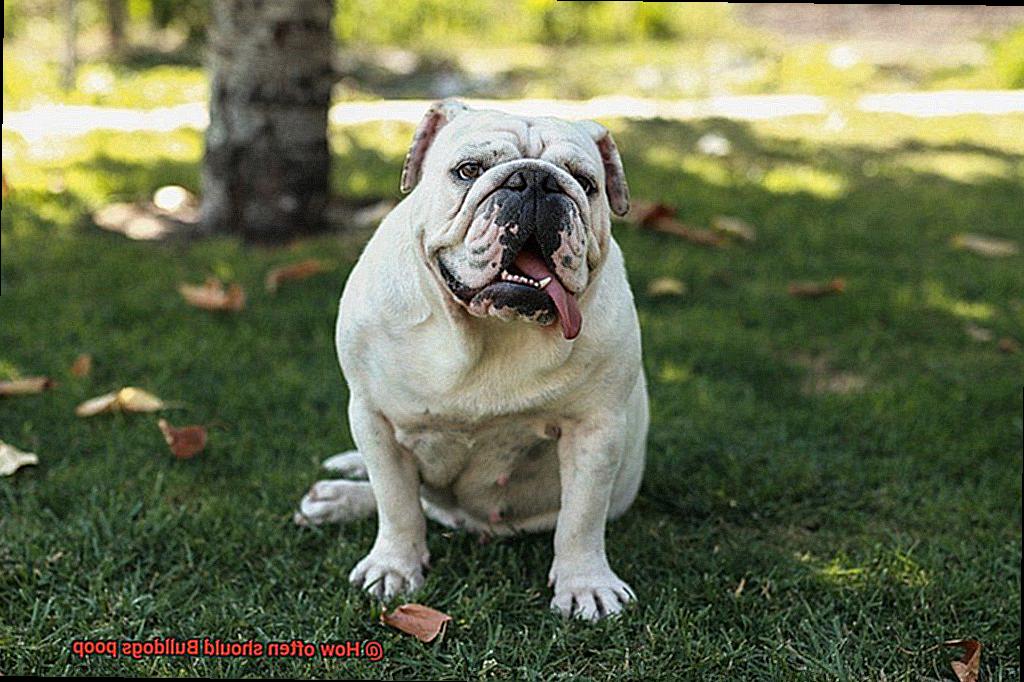
Bulldogs are one breed that is commonly associated with an underbite due to their selective breeding for a shorter snout and strong jaws. However, not all bulldogs will have an underbite, and some may have a less severe underbite than others. Regardless of breed, it’s essential to monitor your dog’s dental health and schedule regular check-ups with your veterinarian.
The History of Bulldogs and Bull-Baiting
Bulldogs are a beloved breed known for their charming personalities and adorable looks. But did you know that Bulldogs have a long and fascinating history that has led to one of their most distinctive features – their underbite? Let’s dive into the intriguing story of Bulldogs and bull-baiting to learn more about this unique characteristic.
In England, Bulldogs were originally bred for bull-baiting, a brutal sport in which dogs attacked bulls for entertainment. The dogs were specifically bred for this purpose, with their physical traits carefully selected to make them the most effective fighters. Bulldogs’ strong and powerful jaws allowed them to grip onto a bull’s nose or neck and hold on tight. Over time, this selective breeding resulted in Bulldogs developing an underbite, where their lower jaw protrudes further than their upper jaw. This feature was actually beneficial for bull-baiting, as it allowed the dog to breathe while still holding onto the bull’s nose or neck.
As bull-baiting became illegal in the 19th century, Bulldogs were no longer needed for this cruel sport. Instead, they were bred for other purposes such as companionship and guarding. Despite this shift in breeding priorities, the underbite remained a defining feature of the Bulldog breed.
Today, many people find Bulldogs’ underbites to be endearing, but there are also health concerns associated with this trait. The misalignment of their jaws can lead to teeth crowding and difficulty eating. Therefore, it is important for Bulldog owners to take extra care when it comes to their dental health and to choose appropriate food and toys that won’t cause further damage to their teeth.
How Selective Breeding Causes an Underbite in Bulldogs
Initially bred for bull-baiting, bulldogs were selectively bred for a strong jaw and an underbite to grip onto bulls’ noses or necks. However, over time, bulldog breeding has shifted towards creating a specific look with more pronounced underbites.
Selective breeding is the process of mating animals with desirable traits to produce offspring with those same traits. Breeders have used this technique to create specific physical characteristics in bulldogs, including their adorable underbite. Unfortunately, breeders have continued to select for dogs with more pronounced underbites, which has led to some health problems in the breed.
Bulldogs with severe underbites can experience difficulty eating, breathing, and sleeping. They may even require surgery or other interventions to alleviate these issues. This is because selective breeding can cause a reduction in genetic diversity. When breeders select for specific physical traits, they often do so by breeding closely-related dogs with those traits. This can lead to a decrease in the variety of genes present in the breed’s population, which can increase the frequency of genetic disorders like underbites.
But genetic factors are not the only cause of underbites in bulldogs. Environmental factors can also contribute to this condition. Puppies who are not fed a balanced diet or who experience trauma to their jaw during development may be more likely to develop an underbite later in life.
It’s important for breeders and owners to be aware of the potential health problems associated with bulldogs’ signature underbite. By prioritizing genetic diversity and responsible breeding practices, we can work towards creating healthier bulldogs with less severe underbites. Bulldogs are no longer used for bull-baiting, and it’s time to shift the focus towards their health and well-being.
Shortened Snouts and Health Issues
Bulldogs are an iconic breed with their unique appearance, but unfortunately, their adorable features can lead to some serious health problems.
One of the most common health issues is the underbite. This occurs when a bulldog’s lower jaw protrudes beyond the upper jaw due to their shortened snout and flat face. The misaligned teeth can cause problems with chewing and eating, as well as dental issues such as tooth decay and gum disease.
Besides dental issues, bulldogs also have trouble breathing due to their narrow airways. This difficulty in breathing can be especially problematic during exercise or hot weather and may lead to respiratory problems or heat stroke. Furthermore, due to their prominent eyes and shallow eye sockets, bulldogs are more susceptible to eye problems such as cherry eye and corneal ulcers.
But don’t worry. As a responsible bulldog owner, there are measures you can take to prevent these health issues. Regular veterinary check-ups, proper dental care, and monitoring your bulldog’s breathing during exercise are all crucial steps to keep your furry friend healthy and content.
It’s important to remember that responsible breeding practices are key to creating healthier bulldogs for generations to come. While it may be tempting to prioritize a cute appearance over health, it’s essential to prioritize your bulldog’s well-being above all else.
Other Breeds with an Underbite
While Bulldogs are the breed most often associated with this distinctive physical feature, there are several other breeds that also exhibit this trait, including Boxers, Boston Terriers, Pekingese, Shih Tzus, and some types of Spaniels.
The reason why these breeds have an underbite is due to selective breeding practices that have prioritized creating a certain “look” for the breed over the animal’s health and well-being. This has led to these breeds having shorter snouts and flatter faces, which can cause their lower jaw to protrude slightly.
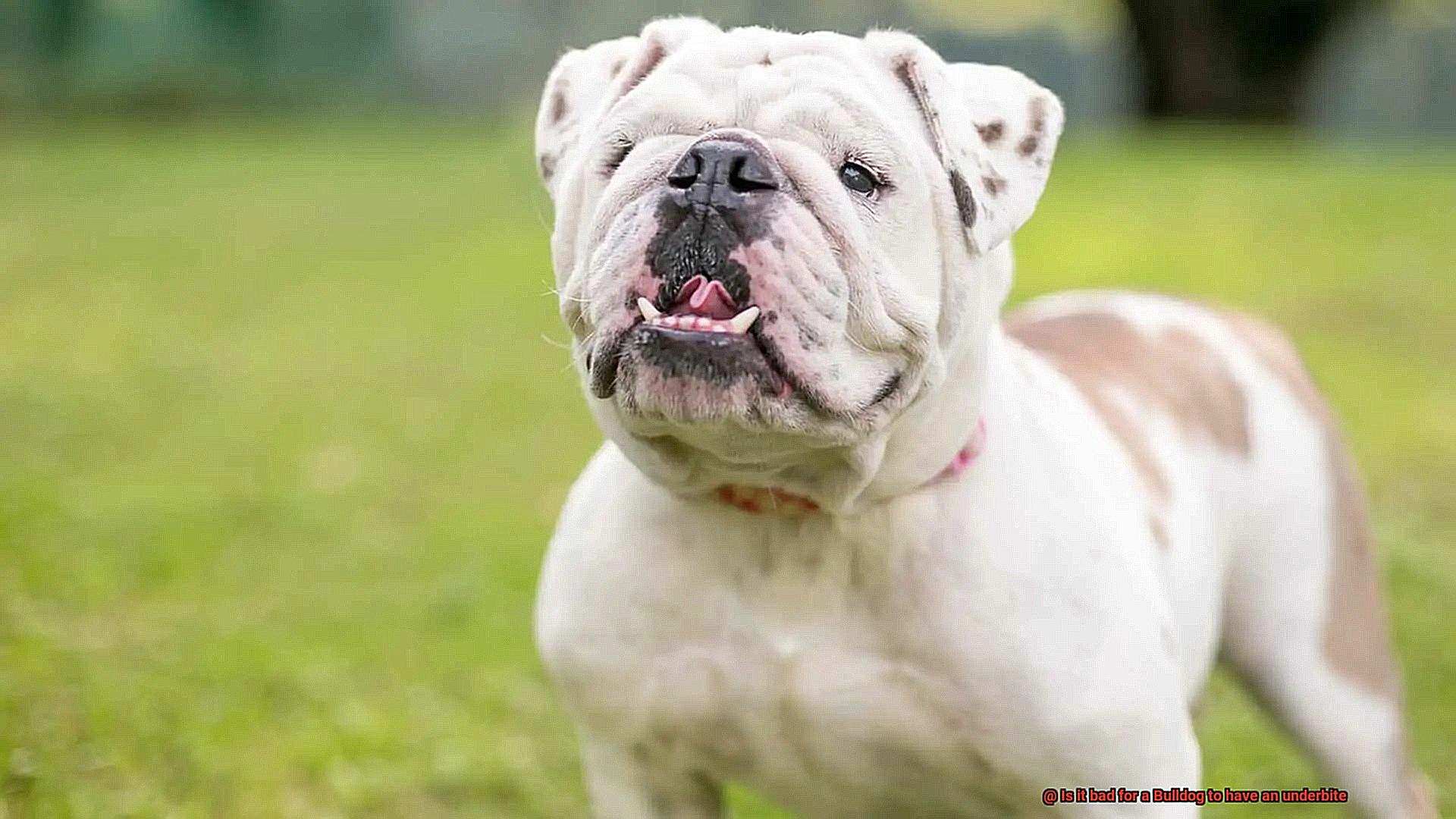
While an underbite may give these breeds a unique appearance, it can also lead to various health issues such as dental problems, difficulty eating, and breathing difficulties. As responsible pet owners, we must be aware of these potential health challenges and take proactive steps to ensure our furry friends stay healthy and happy.
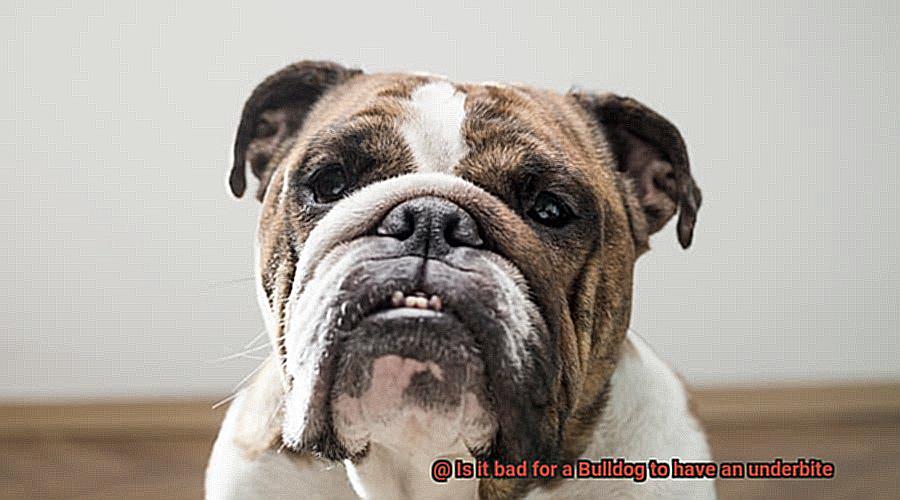
Regular dental check-ups and professional treatments if necessary can help prevent dental problems such as gum disease or tooth decay from becoming more serious. Veterinary care is also essential in monitoring our dog’s overall health and well-being, ensuring that any emerging issues are detected early and treated promptly.
Dental Care for Bulldogs with an Underbite
That’s why it’s crucial to maintain their oral health, and I’m here to offer tips on how to do so.
Bulldogs with an underbite are more prone to dental issues such as periodontal disease due to the positioning of their teeth and jaws. This disease occurs when bacteria build up on the teeth and gums, leading to inflammation and infection. If left untreated, it can cause tooth loss, pain, and even more serious health problems such as heart disease. To prevent this, regular dental check-ups and cleanings are necessary for Bulldogs with an underbite. They may require more frequent cleanings than other breeds due to the positioning of their teeth.
In addition to professional cleanings, daily brushing with a soft-bristled toothbrush and using dental chews or treats can help maintain good oral hygiene. By doing this, you’ll significantly reduce the risk of periodontal disease and other dental issues.
It’s important to note that Bulldogs with an underbite may also be predisposed to malocclusion. This occurs when the teeth do not fit together properly and can lead to difficulty eating or even injury to the mouth if left untreated. In severe cases, orthodontic treatment may be necessary to correct the underbite and improve dental health. Always consult with your veterinarian or veterinary dentist before making any decisions about orthodontic treatment.
CR2tugK4B10″ >
Conclusion
To wrap it up, Bulldogs are undoubtedly one of the most charming and unique dog breeds out there, with their signature underbite being a defining feature. However, this physical trait stems from a dark past when these dogs were bred for bull-baiting, which is now thankfully illegal.
Sadly, selective breeding practices have continued to prioritize appearance over health, leading to potential dental and respiratory issues in bulldogs. As responsible pet owners, it’s our duty to prioritize our furry friend’s well-being by taking proactive measures such as scheduling regular dental check-ups and cleanings with our veterinarian. Daily brushing with a soft-bristled toothbrush and providing dental chews or treats can also help maintain good oral hygiene.
It’s not just bulldogs that suffer from an underbite; other breeds also exhibit this trait due to irresponsible breeding practices. Therefore, we must always put our pets’ health above all else by seeking veterinary care when necessary and monitoring their overall well-being.
To sum it up, while Bulldogs’ underbite is fascinatingly tied to their history, it can lead to potential health problems if left untreated.
